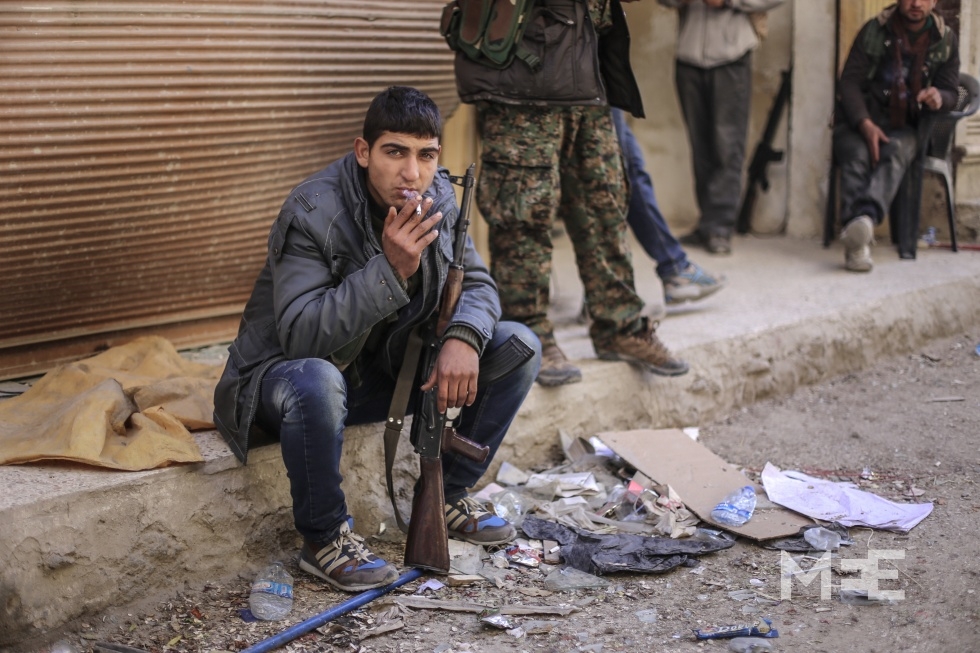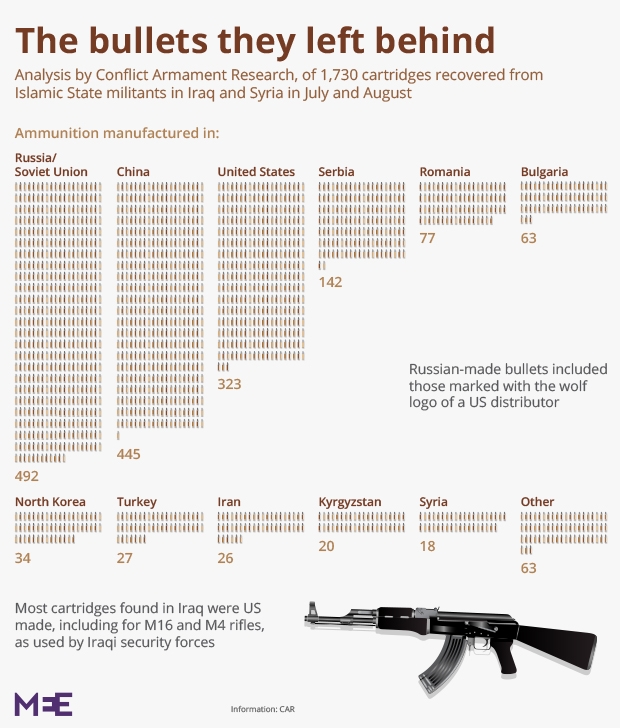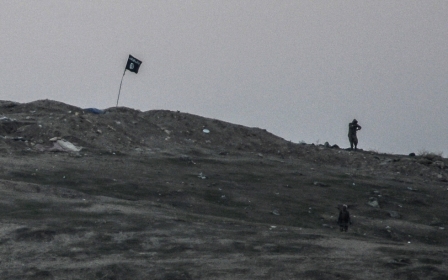Inside Kobane: Kurdish fighters push back IS but fear road ahead

KOBANE, Syria: Ayn al-Arab, known as Kobane to its largely Kurdish residents, is a Syrian city, located on the northern border with Turkey.
It has made world headlines in recent months, after the Islamic State (IS) first tried to take over the town, deemed a key piece of the puzzle in IS’s bid to take over much of Syria and neighbouring Iraq.
After a number of failed attempts, Middle East Eye was able to enter Kobani last week with assistance from the Kurdish People’s Protection Units (YPG), which have been the main fighting force defending Kobane.
While the YPG did finally help to coordinate safe passage, working in Kobane remains extremely difficult. After one gains YPG’s blessing, many of its fighters are happy to talk, but few wish to give their names and many don’t want to be photographed for security reasons.
Filming is also prohibited at night when the fighting tends to be heaviest, although tensions are almost always at fever pitch, with US-led anti-IS coalition aircraft bombing Kobane on the one hand, and IS until very recently refusing to ease their siege.
“The Islamic State controls around a third of the city but it has started to retreat since the coalition attacks and the entrance of the Iraqi Peshmerga, as well as some of the Free Syrian Army members who have come in to support the YPJ and YPG,” said a YPG fighter, who did not want to give his name for security reasons.
The YPJ are the YPG’s female fighting units - which are both the military arm of the Democratic Union Party (PYD) – and have been the main forces fighting off the IS advance for month.
In late September, US-led anti-IS coalition airstrikes began bombing in the outskirts of Kobane, in their effort to stop the town from falling, while in late October, the PYD forces were joined by Iraqi Kurdish Peshmerga fighters who entered the town, bringing fresh reinforcements and supplies.
In recent weeks, Free Syrian Army forces also entered the fighting in Kobane, smoothing over years of tensions that stemmed from Kurdish fighters not actively going on the offensive against Syrian President, Bashar al-Assad.
“We returned to grasp the reins of Kobane after receiving support from the Iraqi Peshmerga and the Free Syrian Army and the intensified attacks by the Coalition against the Islamic State,” a YPG official in Kobane told MEE.
“We would have lost Kobane if it wasn’t for their support. [Islamic State] were advancing and gaining hold over vast swathes very quickly. But they are now receding. They insist on controlling Kobane and this is clear from the stubbornness and persistence.”
Despite the reinforcements, however, the situation remains precarious.
“Islamic State is intensifying its attacks on the eastern gate, and is trying to take control of it in order to cut off supply lines from the Turkish side, but the fighting is still fierce and we are still in control of the reins,” the first fighter added.
The ramifications of the fierce fighting are clear to see. Kobane’s roads are lined with empty bullet casings, cast aside personal belongings and rubbish that has been left out in the heat and rain. Explosions, missile strikes and rockets attacks are heard throughout the day, with escalations flaring up seemingly at random. Few journalists have dared to enter Kobane for more than a month, due to the heavy fighting.
The once vibrant town - which was the heart of one of the self-proclaimed Kurdish cantons, announced by the PYD in 2013 - has long been emptied of its civilian population, tens of thousands of whom have fled northward to safety. These days, only the fighters remain, keeping a sense of community in difficult times though the extensive support networks they have built and maintained.
“The electricity, communication networks, and water has been cut off from the city for the last three years,” another fighter, who also did not want to be named for security reasons, told MEE.
“We used to rely on electricity generators, but now the situation has gotten more difficult, following the attacks by the Islamic State in the last few weeks.”
A female YPJ fighter, also explained that she is feeling the pressure.
“The coalition’s planes have dropped support to us from the air but we were only able to pick up a very small part of it and the rest fell on places controlled by the Islamic State,” she said, in reference to an allegedly botched drop on 20 October.
The US admits that possibly one of its packages fell into the hands of Islamic State, although it insists that the overwhelming majority of its drops made it to the Kurdish forces. But even without the controversy, fighters complain that the kinds of weapons getting through may not be enough to hold off IS.
“The boxes that fell included light weapons and ammunition and some hand grenades, and food and defence weapons, but that doesn’t help us to confront the Islamic State’s force,” said the female fighter. “They have tanks, and both defence and attack weapons, and large explosives.
“We are really facing a large and organised force.”
New MEE newsletter: Jerusalem Dispatch
Sign up to get the latest insights and analysis on Israel-Palestine, alongside Turkey Unpacked and other MEE newsletters
Middle East Eye delivers independent and unrivalled coverage and analysis of the Middle East, North Africa and beyond. To learn more about republishing this content and the associated fees, please fill out this form. More about MEE can be found here.





